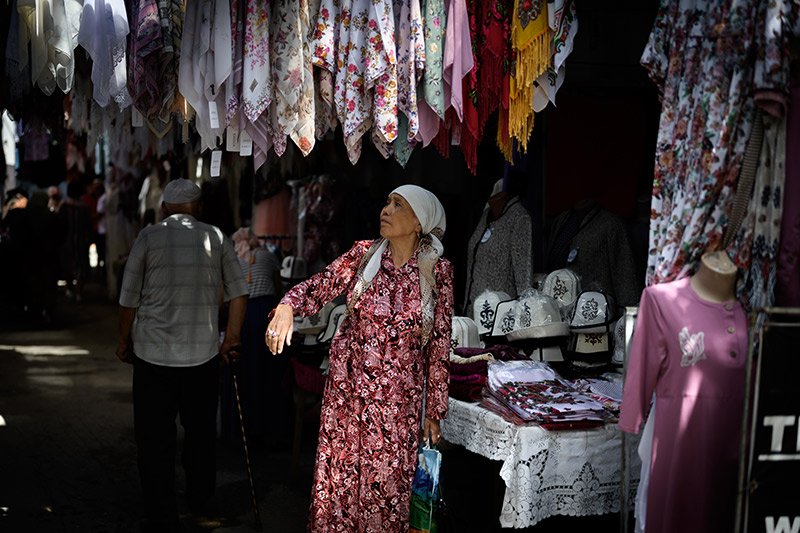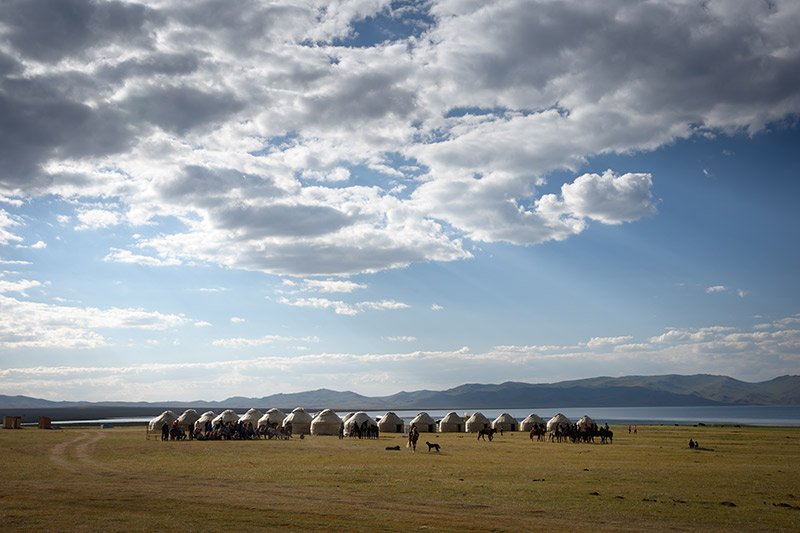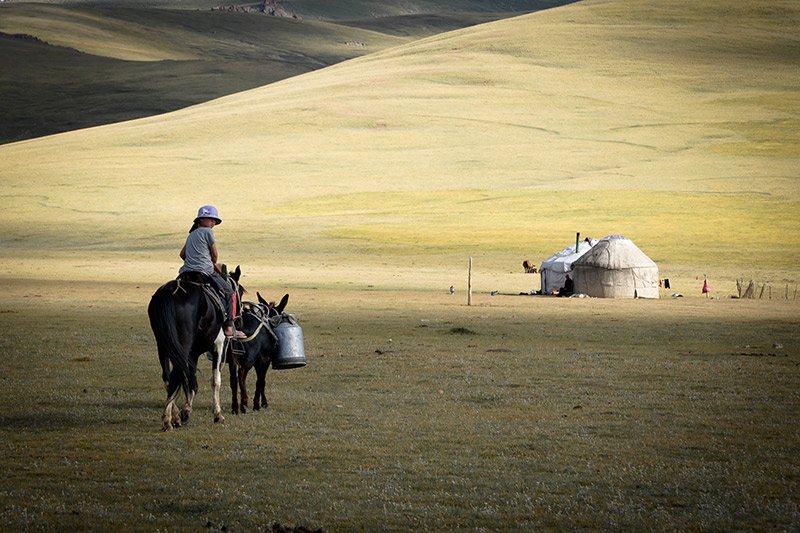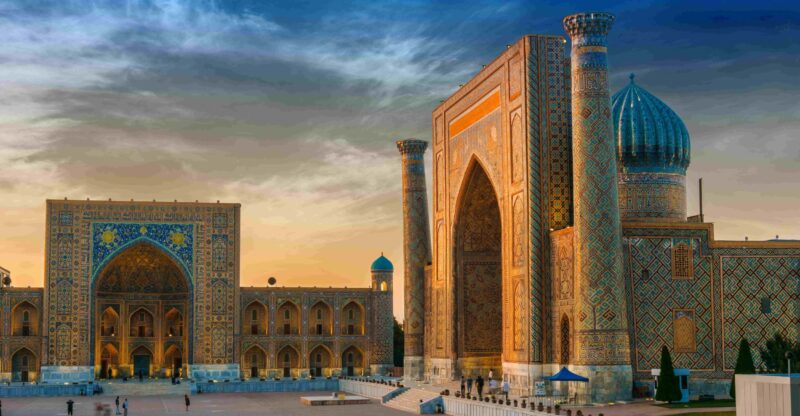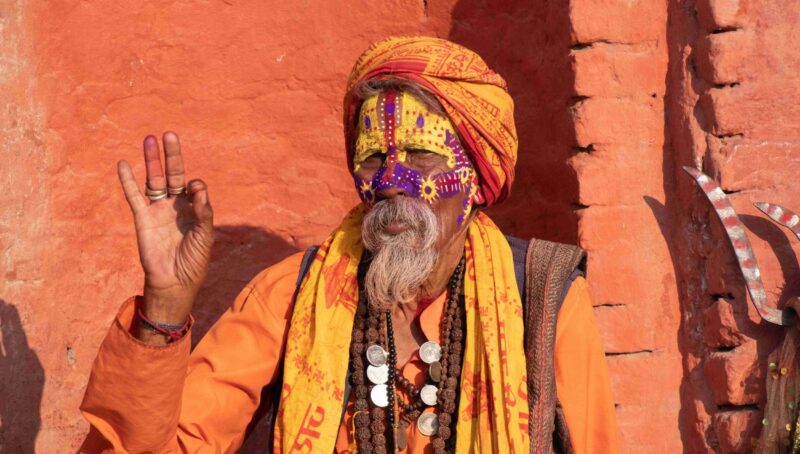| Tour Code | Start | End | Trip Status | Pricing Per person |
|---|---|---|---|---|
| TPH/060626 |
Jun 06, 2026
Saturday |
Jun 21, 2026
Sunday |
Guaranteed |
£3,085.00
Single Room Supplement: £365.00 |
| TPH/040726 |
Jul 04, 2026
Saturday |
Jul 19, 2026
Sunday |
Guaranteed |
£3,085.00
Single Room Supplement: £365.00 |
| TPH/150826 |
Aug 15, 2026
Saturday |
Aug 30, 2026
Sunday |
Guaranteed |
£3,085.00
Single Room Supplement: £365.00 |
| TPH/030727 |
Jul 03, 2027
Saturday |
Jul 18, 2027
Sunday |
Guaranteed |
£3,085.00
Single Room Supplement: £365.00 |
Along the Pamir Highway Tour
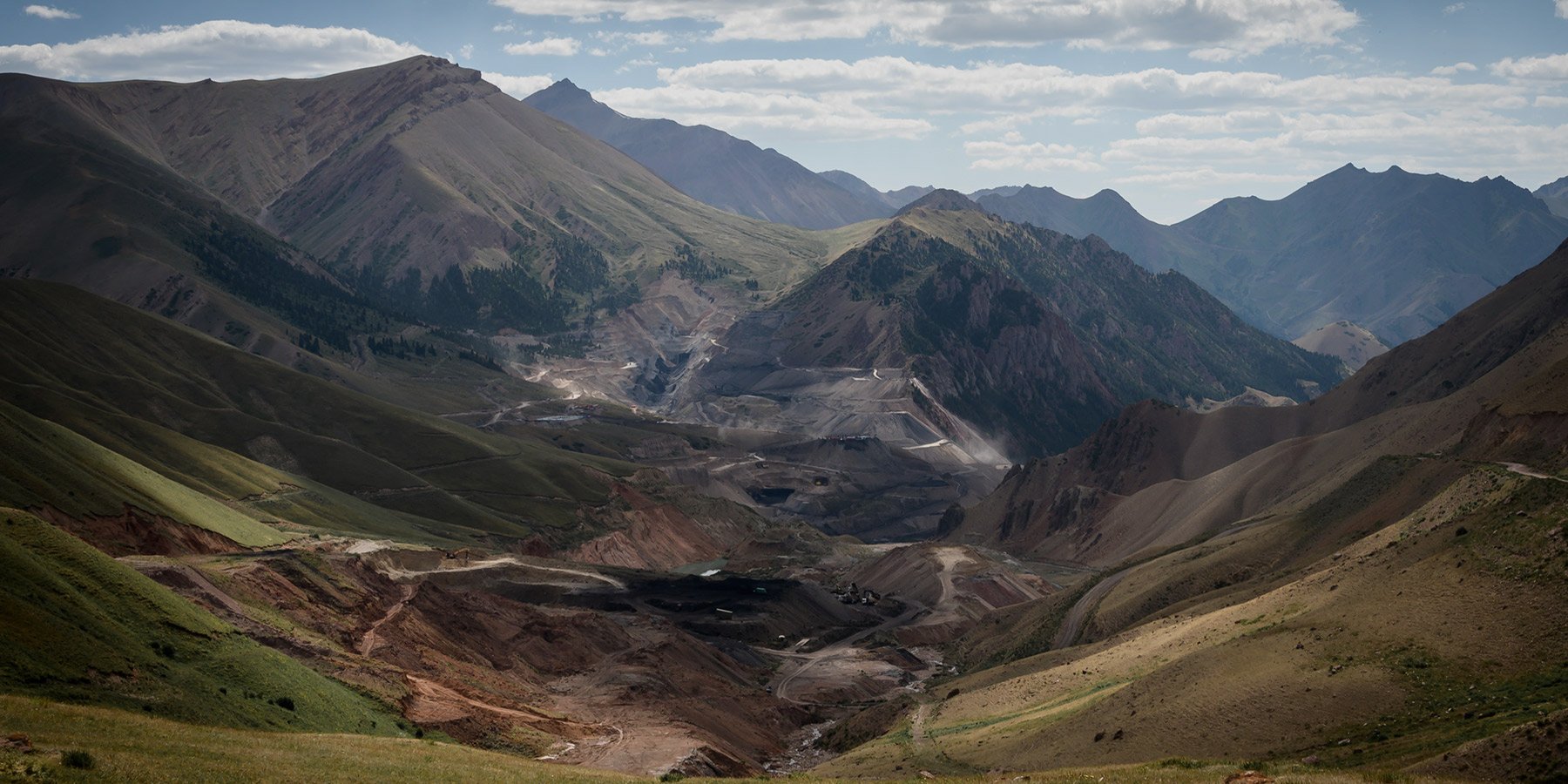
The Pamir Mountains have long been known as ‘the roof of the world’, a region of utterly breathtaking scenery and home to a fascinating melange of cultures. Follow in the footsteps of ancient traders and pilgrims, and Victorian explorers in discovering a region largely isolated from the world beyond, a land where each village speaks its own different dialect and local traditions have been maintained for centuries. Traversing the legendary Pamir Highway, this trip starts in the Tajik capital Dushanbe but quickly leaves the modern world behind as you wind your way along difficult mountain roads and high passes, in the shadow of some of the highest mountains on our planet. We visit ruined forts from the days of the old Silk Road, and pass gem mines mentioned by Marco Polo. Spending many nights in homestays in small communities, we are able to gain a great insight into what it means to live in this harsh but majestic region. From Tajikistan we cross into Kyrgyzstan and the ancient city of Osh, and then head to Chichkan where we can meet local shepherds or hike in the surrounding countryside. We also visit Issyk Kul, the largest lake in Central Asia, and have time to explore Bishkek, the capital of Kyrgyzstan. This trip ventures to a remote and enchanting land that has remained hidden to the rest of the world, a land of towering peaks, turbulent rivers and fascinating people. Travel with us on one of the most amazing journeys you are ever likely to make.
Arrival and departure transfers
Overland transport throughout with professional driver
All accommodation
Services of English-speaking guide / tour leader
Meals as listed, B – Breakfast, L – Lunch, D – Dinner
Entrance fees for sites listed as part of the itinerary
International flights (, contact , us, for expert advice and a quote)
Any airport taxes
Travel Insurance
Visa – when required
Drinks
Items of personal nature
Tips (Discretionary)
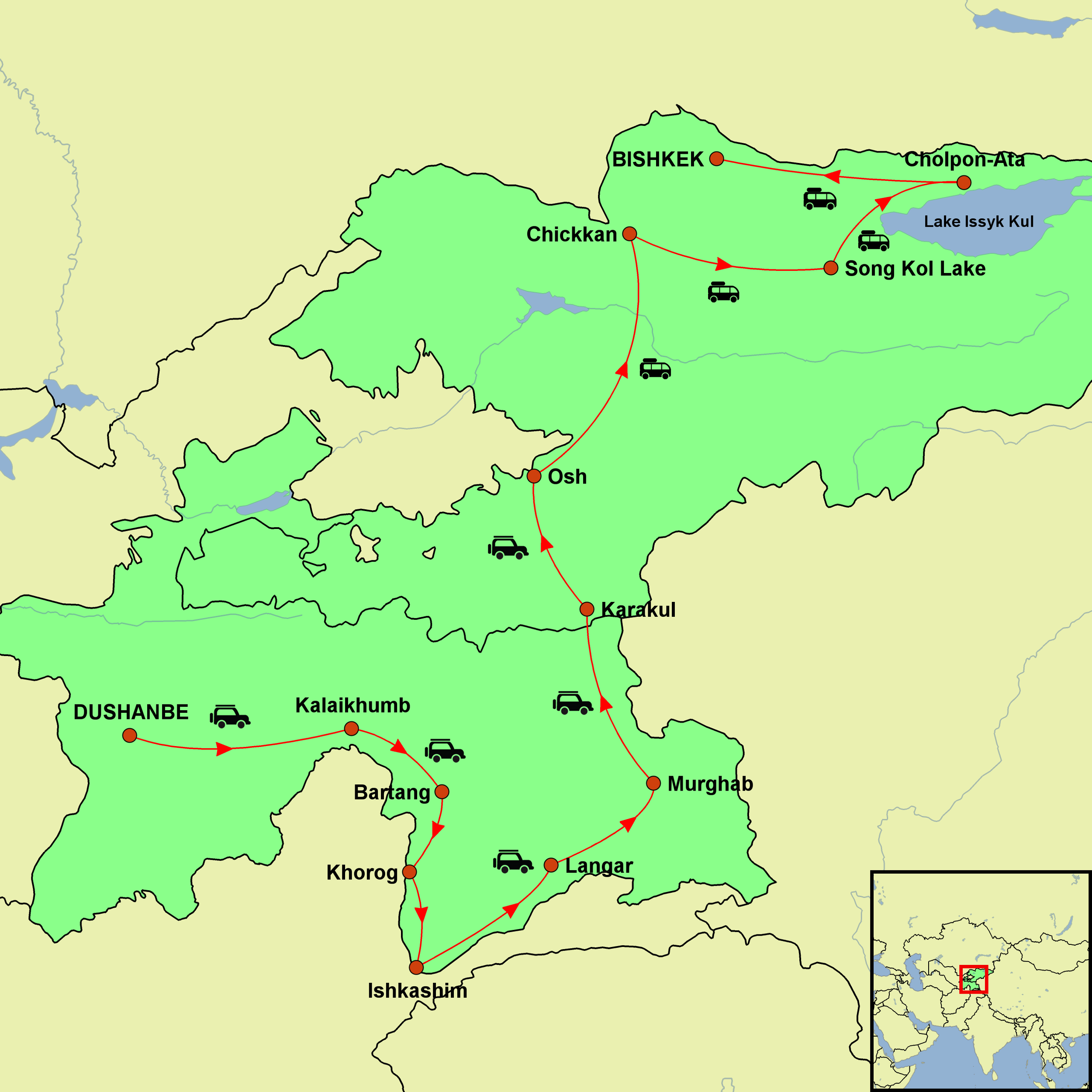
The “Along the Pamir Highway” tour by Undiscovered Destinations is a 16-day small group journey traversing the remote and rugged landscapes of Tajikistan and Kyrgyzstan. Starting in Dushanbe, the capital of Tajikistan, the itinerary follows the legendary M41 route—known as the Pamir Highway—through the towering Pamir Mountains. Travellers will navigate high-altitude passes, including the Ak-Baital Pass at 4,655 metres, and visit ancient Silk Road forts and gem mines once chronicled by Marco Polo. The route offers immersive experiences in the Wakhan Valley, bordering Afghanistan, and includes stays in local homestays, providing authentic insights into the traditional lifestyles of Pamiri communities. Crossing into Kyrgyzstan, the journey continues through the ancient city of Osh and the picturesque Chichkan Gorge, where opportunities for hiking and interactions with local shepherds abound. The tour culminates with visits to Issyk-Kul Lake, the largest lake in Central Asia, and the Kyrgyz capital, Bishkek. Designed for adventurous travellers with a good level of fitness, this expedition offers a unique blend of cultural immersion and breathtaking natural beauty, making it one of the most remarkable journeys through Central Asia’s mountainous heartland.
Ak-Baital Pass
Drive across the highest point of the Pamir Highway at 4,655 metres, surrounded by stark, awe-inspiring mountain landscapes.
Wakhan Valley Views
Travel along the remote Afghan border with breathtaking views, ancient fortresses, and glimpses into the isolated Wakhi way of life.
Homestays in Pamiri Villages
Experience warm hospitality and traditional culture through overnight stays with local families in the heart of the Pamirs.
Ancient Silk Road Sites
Explore ruins of Silk Road caravanserais and forts, including Yamchun Fortress, perched dramatically above the valley.
Issyk-Kul Lake, Kyrgyzstan
Unwind beside one of the world’s largest alpine lakes, framed by mountains and dotted with traditional Kyrgyz settlements.
Download the Information Pack
To download the tour full dossier, which includes a complete day-by-day itinerary breakdown and detailed tour information, fill in the details below.

Foreign Office Travel Warnings Before booking your tour, please familiarise yourself with the country specific information provided by the UK’s Foreign, Commonwealth and Development Office (FCDO) – www.gov.uk/foreign-travel-advice. This includes important information such as latest immigration requirements, and details of any travel advisories. We constantly monitor the advice posted by the FCDO. In particular we will always advise clients of any travel warnings. At present there are no warnings against travel to the parts of Kyrgyzstan that we visit on this tour. Please feel free to contact us should you have any specific concerns or would like to know in detail what measures are being taken to ensure visits remain trouble free and without incident. It should be noted that this information applies to British citizens. Other nationals are asked to check the current position of their respective government. Visa Information At the time of writing British, US and Australian nationals require a visa for a tourist visit to Kyrgyzstan. For further details please visit the applicable website shown below. British Nationals – www.gov.uk/foreign-travel-advice US Nationals – travel.state.gov/content/travel/en/international-travel.html Australian Nationals – www.smartraveller.gov.au Other nationals should check the latest requirements with the authorities in their home country, or with the destination’s nearest embassy or consulate. Should you require any documentation to support a visa application, such as a letter of invitation, upon request this will be provided by Undiscovered Destinations after receipt of your balance payment. As it is the travellers’ responsibility to ensure that they meet all entry requirements it is essential that you check the rules and any other conditions at the time of booking and again when making your balance payment. In addition, we would strongly advise that you make a final check around two weeks before your arrival. This is important as requirements can change at short notice. Undiscovered Destinations, when possible, will provide guidance about entry rules, but in the first instance please contact the relevant authorities, including the applicable embassy or consulate for assistance. Passports It is your responsibility to ensure that you are in possession of a full passport, valid for at least six months after the date of return to your country. We strongly advise that your passport contains a minimum of two blank pages, as this may be a requirement of the local immigration authorities. In addition, certain countries will stipulate that the two blank pages are opposite each other. If you are unable to meet these requirements, you may be refused boarding by your airline or denied entry by the immigration authorities. For specific information about the requirements for your destination please check with the country’s embassy or consulate. Alternatively, UK citizens can visit www.gov.uk/foreign-travel-advice. Vaccinations & Protection As with travel to most parts of Asia, we strongly recommend that you contact your doctor’s surgery or a specialist travel clinic for up-to-date information, advice, and the necessary vaccinations. For a visit of less than one month, almost certainly you will be advised to have immunisations against the following: Diphtheria and Tetanus, Hepatitis A, Typhoid, Meningitis. The use of a DEET-containing insect repellent is highly recommended. The legal status and regulation of some medicines prescribed or purchased in your home country can be different in other countries. If you are travelling with prescription or over-the-counter medicine, travellers from the UK can refer to the guidance provided by the National Travel Health Network & Centre and published on the Travel Health Pro website. For further information on the legal status of a specific medicine, you will need to contact the embassy, high commission or consulate of the country or territory that you are travelling to. Travel Insurance It is a condition of booking with Undiscovered Destinations that you have adequate valid travel insurance. It is your responsibility to arrange appropriate travel insurance and ensure you have read and understood the full terms and conditions of your travel insurance policy to ensure that you are covered for all activities you intend to undertake whilst on the tour, including all optional activities. Your Insurance Policy must fully cover you for medical expenses (including cover for Covid-19 conditions) and emergency repatriation to your home country and be valid for the entire duration of your holiday. Local Conditions When travelling to our destinations, many of which are underdeveloped and untouristed by mainstream tourism, a good deal of patience and a sense of humour is an important attribute. This will help you to cope with problems such as ageing or poor infrastructure and when maintenance may not be as high as we would always like. The choice of appropriate accommodation in some towns and cities (particularly the smaller places) can be limited, and standards of both service and maintenance can be less than polished. Guides and other service providers in some of our destinations do not always have the decades of collective practice and experience that their counterparts in more developed countries can draw upon. Although we will always try and resolve any issues as quickly as possible, on occasions there may be some shortcomings which no matter how hard we try will be unavoidable.
